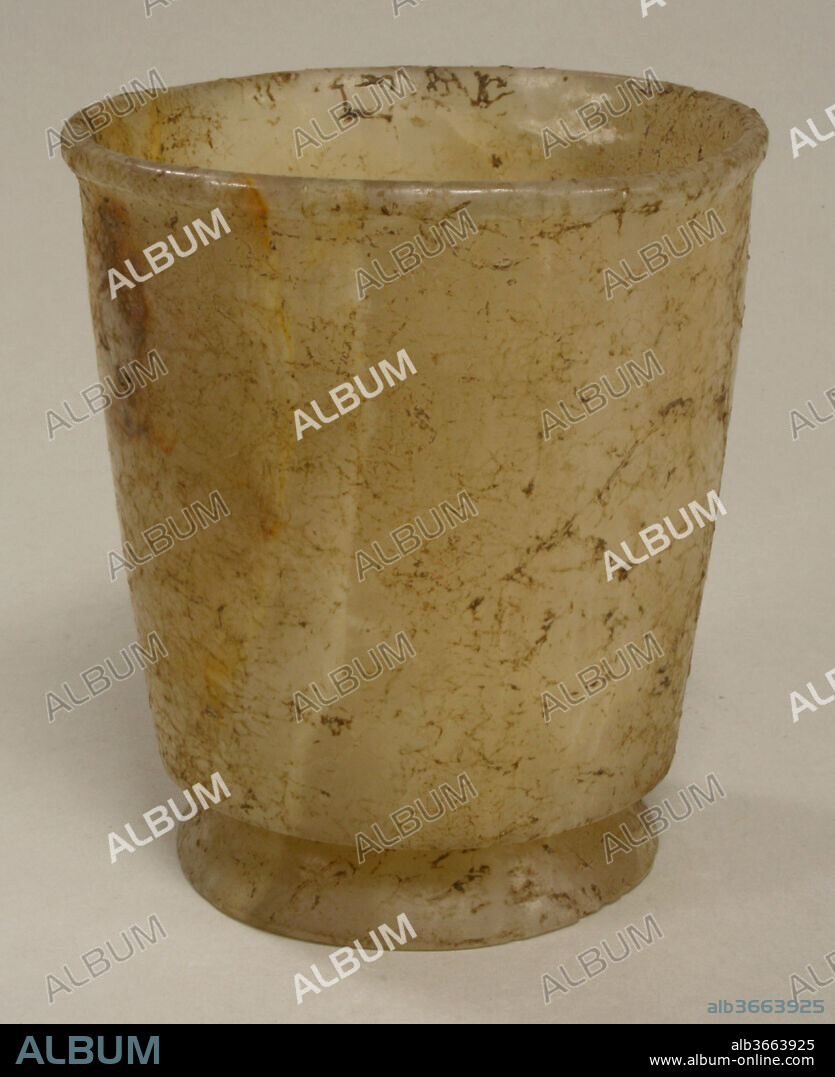alb3663925
Footed Vessel

|
Añadir a otro lightbox |
|
Añadir a otro lightbox |



¿Ya tienes cuenta? Iniciar sesión
¿No tienes cuenta? Regístrate
Compra esta imagen

Título:
Footed Vessel
Descripción:
Ver traducción automática
Footed Vessel. Culture: Maya (?). Dimensions: Height 4-7/8 in.. Date: 14th-15th century (?).
This vessel is carved from a translucent stone, commonly known in Mexico as tecali. Named for the town of Tecali de Herrera in southern Puebla where abundant sources are known, the stone is also found in central Oaxaca and in the southern Maya lowlands. Tecali is often referred to as Mexican onyx; it is, however, not agate but a calcite, a soft stone, similar in appearance to alabaster. It was a valued material throughout ancient Mesoamerica and many ritual and luxury items were made from it. At Teotihuacan, masks, statuary, and vessels of various shapes are fabricated from tecali. During the last centuries before the conquest, effigy vessels, often of substantial size, in the shape of deities and animals such as monkeys or coyotes, were carved from it in many parts of Mesoamerica. Elegant footed vessels of a shape similar to this example with slightly flared walls with a delicate lip were found in offerings at Uxmal and Chichén Itzá, and from the Templo Mayor of Tenochtitlan have come examples in ceramic. To hollow out the stone containers, bamboo drills were used. The surface was smoothed and polished to remove the drill marks--still visible on many examples. Because of the softness of the stone, it does not take a high, lasting gloss. Its translucency and veining range in color from white to many shades of brown. They lend considerable visual appeal.
Técnica/material:
Calcite
Museo:
Metropolitan Museum of Art, New York, USA
Crédito:
Album / Metropolitan Museum of Art, NY
Autorizaciones:
Modelo: No - Propiedad: No
¿Preguntas relacionadas con los derechos?
¿Preguntas relacionadas con los derechos?
Tamaño imagen:
2551 x 3127 px | 22.8 MB
Tamaño impresión:
21.6 x 26.5 cm | 8.5 x 10.4 in (300 dpi)
Palabras clave:
 Pinterest
Pinterest Twitter
Twitter Facebook
Facebook Copiar enlace
Copiar enlace Email
Email
